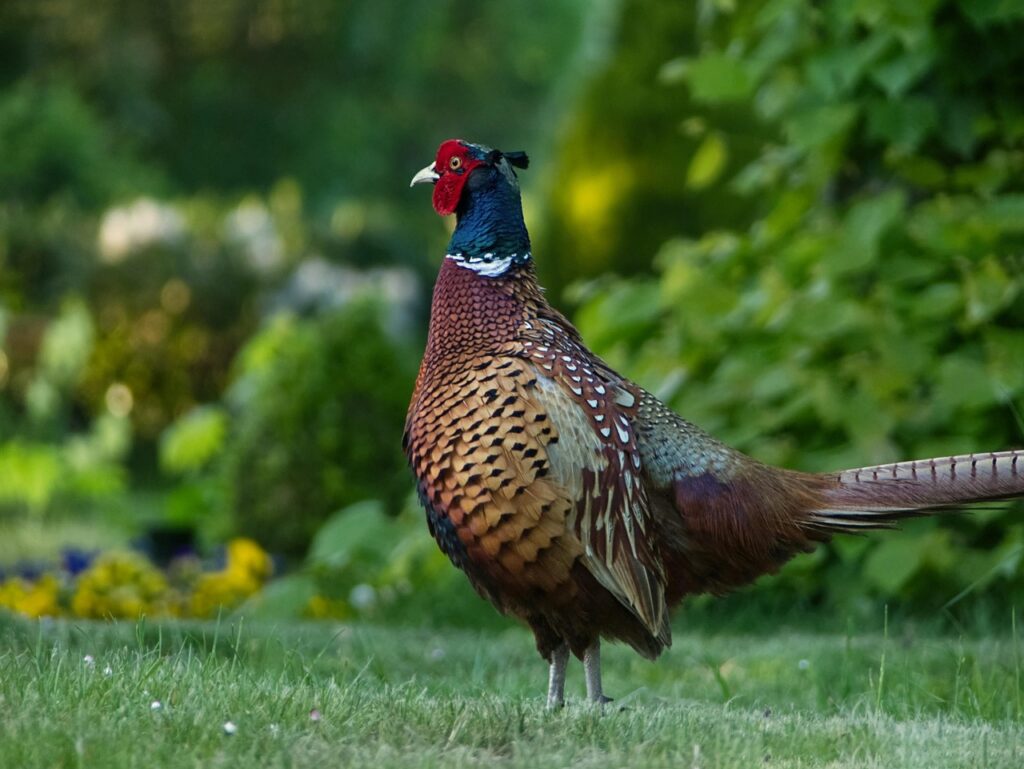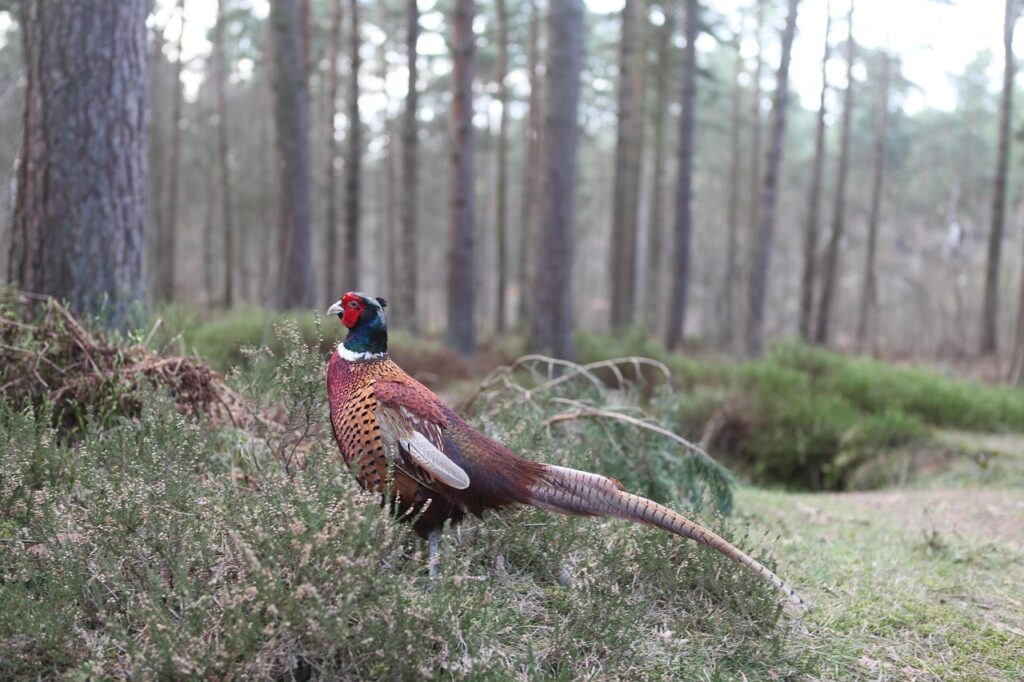Jumbo Ringed-Neck Pheasants
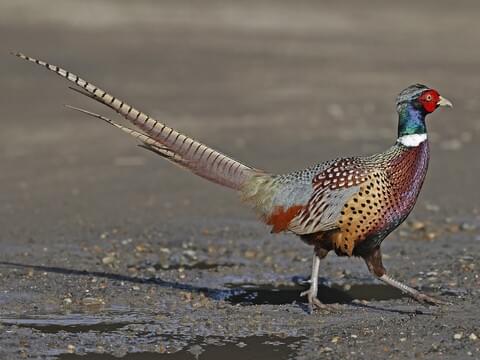
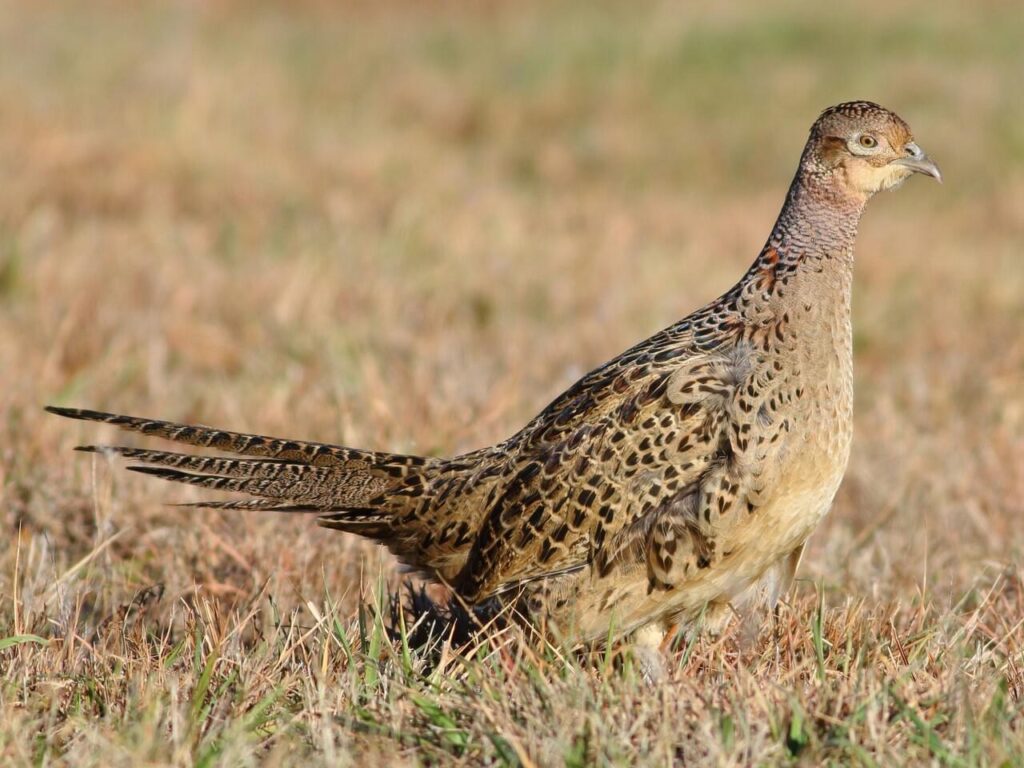
Natural Ways Farm is pleased to announce that we will be introducing Jumbo Ringed-neck Pheasants to our poultry farm in April 2025. The ringed neck pheasant is native to Asia but has been widely introduced in Europe and North America as a game bird for hunting. The Jumbo is the largest of the pheasant breed. This breed is primarily Mongolian blood and is a challenging bird for dogs to get into flight as it tends to be a ground runner. They aren’t as flighty as the regular ringed-neck pheasant but will fly. They have a calmer temperament than the regular ringed-neck except in mating season when the males can get excessively aggressive towards other males. They are extremely territorial. The males/cocks typically weigh between 3.5-4 lbs. and hens 2.5-3 lbs. at maturity. This bird is often used by clubs and growers for meat production. Pheasants require a lot of space to roam and need to have a diverse diet mimicking what they would have in the wild. It is recommended that they be not stocked less than one male to five females and one to ten females is preferred. Females are brown with black markings on their back and wings. They, like the males have long tails. Each hen can lay up to sixty eggs during the mating season. Males are more colorful with a long tail and neck. They have the distinctive ring of white feathers around their neck for which they are named. They have a green/blue iridescent head down to the neck within which the band of white feathers are located. Their bodies are coppery brown except towards the tail which is silvery/grey. The whole body is dappled with black and white spots. They can be quite noisy.
In their natural habitat, look for Ring-necked pheasants on agricultural land and old fields—especially fields that are interspersed with grass ditches, hedges, marshes, woodland borders, and brushy groves. They can live in forests, grasslands, and deserts. Despite this versatility, Ring-necked Pheasants do gravitate to particular kinds of habitat for specific activities. Typically, they roost in trees or dense shrubs in spring and summer and in forested wetlands, farm fields and weedy areas in fall. For early season nesting, they seek cover along grassy roadsides, fence lines, ditches, and wetlands. As the season progresses and vegetation grows taller and denser, they shift their nesting activity to fields of hay, particularly alfalfa. Ringed-necked Pheasants eat seeds—especially grain from farm fields—as well as grasses, leaves, roots, wild fruits and nuts, and insects. Their spring and summer diet is similar, but with a greater emphasis on animal prey and fresh greenery. They eat insects such as grasshoppers, beetles, caterpillars, crickets, and ants, as well as snails and earthworms. Ring-necked Pheasants forage in grasslands, hayfields, woodland edges, and brushy areas. They sometimes pick waste grain from cow manure in pastures. Pheasants take most of their food from the ground, scratching or digging with their bills. They can retrieve roots or seeds from as deep as three inches below the soil surface. They also sometimes forage in shrubs or trees for fruit, leaves, and buds.
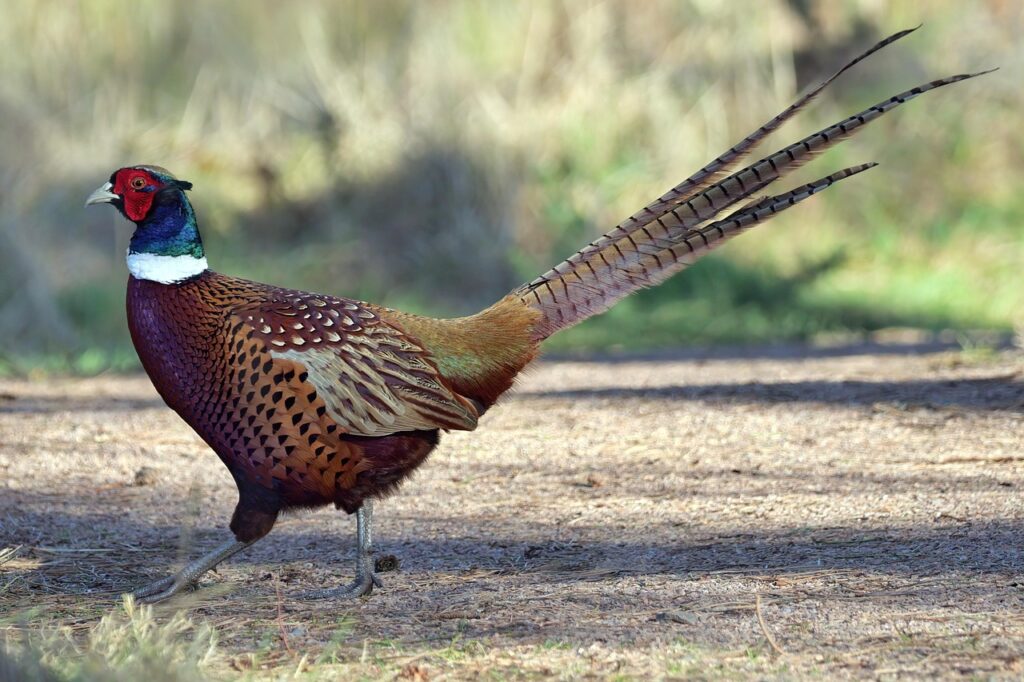
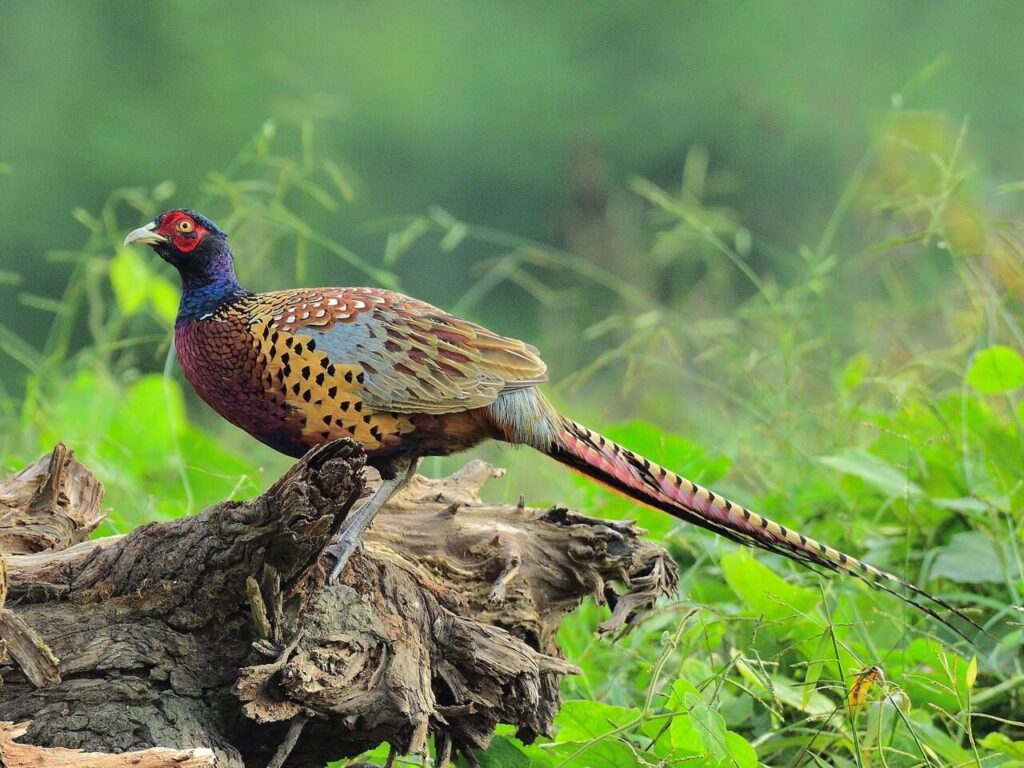
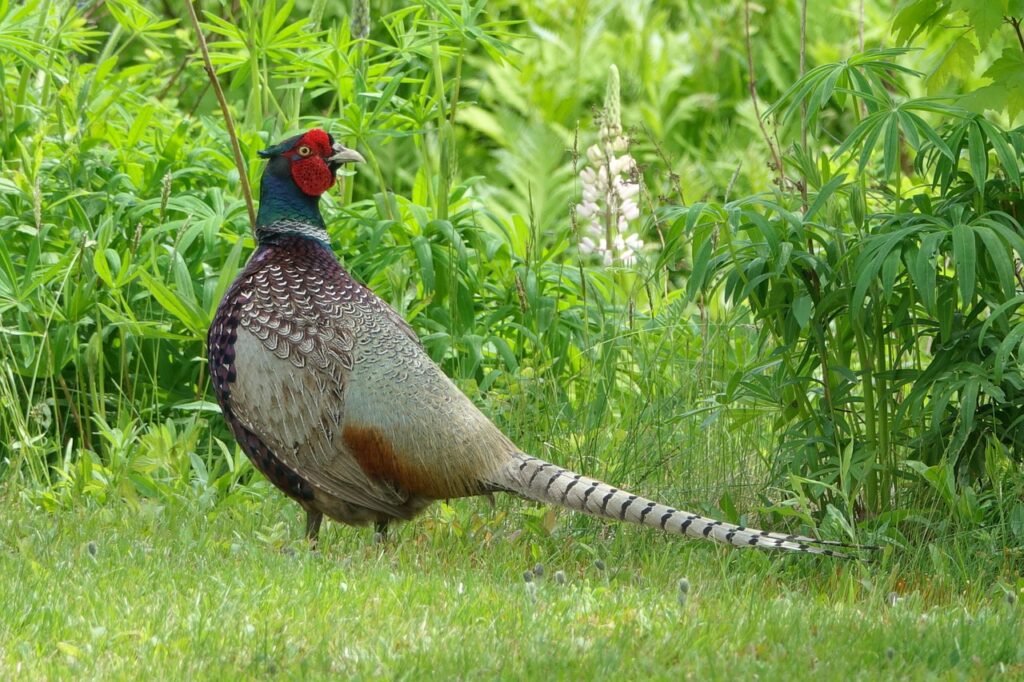
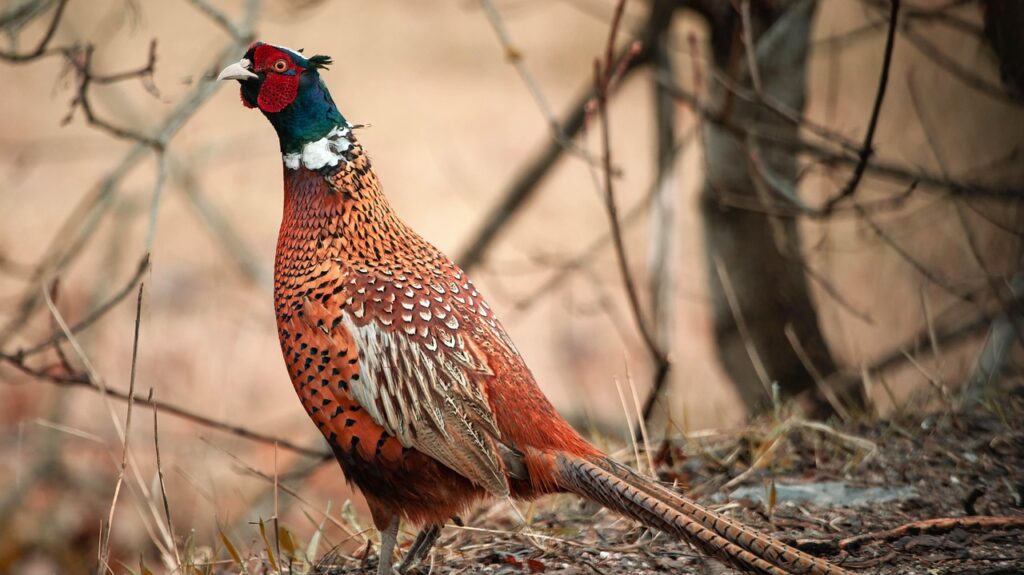
In the wild, Male Ring-necked Pheasants establish breeding territories in early spring. A male maintains sovereignty over his acreage by crowing and calling; he approaches intruders with head and tail erect, and may tear up grass that he then tosses. Competitors sometimes resort to physical combat. After a series of escalating threat displays, fighting cocks flutter upward, breast to breast, and bite at each other’s wattles. They may take turns leaping at each other with bill, claws, and spurs deployed. The challenger usually runs away before long, and these fights are rarely fatal. Females assemble in breeding groups focused on a single male and his territory. The cock courts the hen with a variety of displays—strutting or running; spreading his tail and the wing closest to her while erecting the red wattles around his eyes and the feather-tufts behind his ears. He also “tidbits”—poses with head low while calling her to a morsel of food. A female may flee at first, leading the male on a chase punctuated by courtship displays. Males guard their groups of females from the advances of other males. Like many birds, Ring-necked Pheasants take frequent dust baths, raking their bills and scratching at the ground, shaking their wings to sweep dust and sand into their feathers, lying on their sides and rubbing their heads. Dust-bathing probably removes oil, dirt, parasites, dead skin cells, old feathers, and the sheaths of new feathers. The female Ring-necked Pheasant chooses her nest site, which is usually less than half a mile from her wintering range. Nests are usually surrounded by tall vegetation and built on the ground, often in a natural depression or a hollow that the female scoops out herself, about a third of an inch to 3 inches deep. The Ring-necked Pheasant’s nest is a rudimentary affair—unlined or sparsely lined with vegetation taken from beside the nest depression. Females gather grasses, leaves, weed stalks, fine twigs, corn husks, and/or a few feathers from their own breast with which to line the nest. The average nest bowl is about 7 inches across and 2.8 inches deep.
Clutch Size: 7-15 eggs
Number of Broods: 1-2 broods
Egg Length: 1.6-1.9 in (4.1-4.9 cm)
Egg Width: 1.3-1.5 in (3.3-3.8 cm)
Incubation Period: 23-28 days
Egg Description: Olive-brown to blue-gray.
Condition at Hatching: Pheasant chicks hatch completely covered with down, eyes open. They leave the nest immediately, following the female and feeding for themselves.
Chicks are very small and are escape artists. They start fending for themselves soon after hatching.
Natural Ways Farm hopes to provide fertilized eggs for sale as well as juvenile birds. Please contact us if you are interested.
